 |
||
|
||
| ||
Better Smaller But BetterSome of our constant readers must have heard about regular Intel Developer Forums (IDF) held twice a year in California and then in different IT centers in the world. At these events, (which are getting more and more like a produced show, though intended for IT professionals, not consumers) the corporation tries to inspire IT managers and developers with its new achievements, to motivate them to use those latest technologies and products, which Intel considers the most promising for itself and its closest partners. IDF budget is really huge (so there are even questions inside the corporation about its expediency, especially in the light of future global Intel personnel cuts due to recent poor financial results). But the leader of the semiconductor industry can still afford such expenses, as it counts on the industry's response to act in Intel's vector, which will naturally bring great profits. Publicity from such events also plays into its hands, increasing company's weight and recognition among consumers — the IT press usually covers IDF and innovations presented there with zeal. But it would have been naive to assume than only Intel can afford such events and inform IT professionals and interested people about the latest computer technologies and products on a regular basis. We'll talk about one of such technology forums in this article. Though we'll inevitably compare it with IDF from time to time… Summer, home of Chinese IT industry, Taipei (Taiwan)  houses VIA Technology Forum (VTF 2006). This time it united a lot of key IT players from all over the world. Along with the host (VIA Technologies, Inc.), the active participators included such giants as AMD, IBM, HP, Microsoft, Fujitsu, and a number of other leading players in the world IT industry. 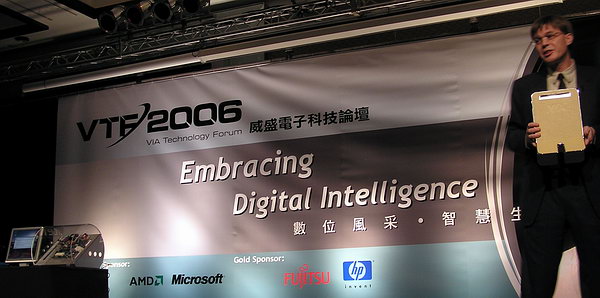 While the IDF host actually usurps all key reports and presentations, letting partners put a few words in Intel bosses' speeches from time to time, VTF is much more democratic. Main companies participating in the event had an opportunity to give their own key reports (sometimes even several ones), that is to provide details about their own technologies and products (it's very interesting in itself, because it does not happen very often). Technologies were in majority here (in full accord with the name of the forum). Yearly VIA Technology Forum was held for the seventh time already. With all its long-term history and traditions, it managed to attract attention of more than 800 participants, who made themselves comfortable in a huge conference hall of the elite hotel "Grand Hyatt Taipei" near the Taipei 101 sky scraper. 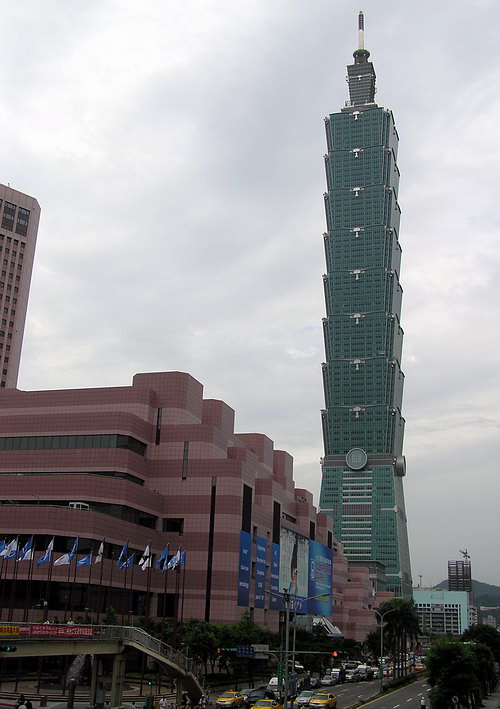 The forum was devoted to the burning issues of the day. One of the key topics was creation and conceptual usage of miniature computers. So the subtitle of this article could have just as well be used instead of the official motto "Small is Beautiful" of this forum. Three days of VTF 2006 consisted of plenary sessions and technical seminars, attended not only by professionals from this region (being still in majority for obvious reasons), but also by specialists from the USA and Europe. Reports were given by top executives of the above-mentioned and some other companies, so attendants had an opportunity to learn details and even some "secrets" about future events at first hand — new technologies and products as well as strategies in the fields of home, mobile, and corporate devices.
Small is Beautiful!The key theme of the VIA keynote address, given by VIA President and CEO Wenchi Chen (on the photo), 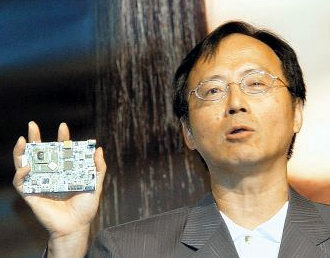 was how miniaturization and feature integration at the silicon, platform and system level, as enabled by the great strides made in power efficiency over the last few years, are driving the transition of the traditional PC platform into smaller, cooler, lighter devices than ever before – and, thus, accelerating the pace of digital intelligence proliferation. VIA is trying to propel the industry to progressive miniaturization and power economy of computer solutions by offering new innovative products — processors, chipsets, reference motherboards and form factors. To highlight VIA's industry leadership in miniaturization and integration at the silicon level, Wenchi Chen gave an early preview of John, the next in the VIA CoreFusion processor platform series, that combines a VIA C7-M Esther mobile processor core with the very latest totally integrated mobile chipset, the VIA VX700, Northbridge and Southbridge combined in a single chip. As a complete processor plus core logic in a single package, John will play an important role in maintaining the pace of miniaturization. It's expected at the end of 2006. It allows to design not only Ultra Mobile PCs (remember that similar solutions from the other companies require at least 3-4 system chips — CPU and chipset), but also cheap notebooks for just $400.
UltraMobile PCThe transition in the mobile space of the notebook PC to smaller, lighter devices with more consumer electronics design was highlighted at VTF 2006 by Epan Wu, Deputy Director of CPU Product Marketing, who looked first at the new category of PCs, the Ultra Mobile PC,  explaining the benefits of this new form factor recently launched by Microsoft (famous Origami). Various companies already demonstrate their samples.  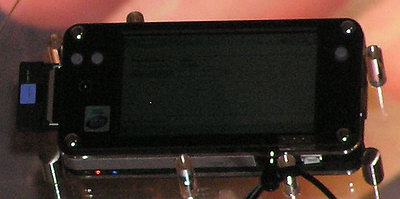 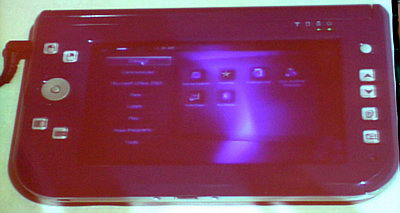 Even though UMPCs are not launched yet, specialists from VIA Technologies and other companies are already thinking about increasing miniaturization, DualCor solutions in particular. For example, cPC concept, that is a PC Phone, which operates as a sterling PC, PDA, and a handset in ultra compact dimensions. Lots of various UMPCs were demonstrated at the forum. They were certainly based on VIA processors. 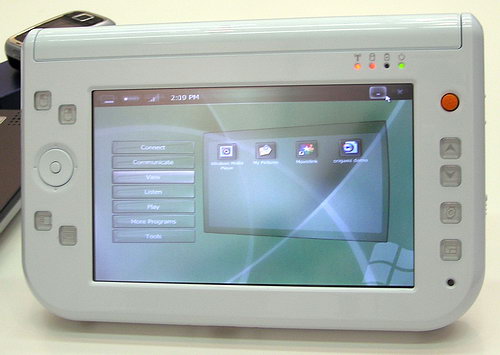 We'll talk about them in detail a tad later.
VIA's Desktop PlansVIA is also going to stand its ground on the market of desktop solutions. In particular, VIA Chipset Marketing Manger Keith Kowal demonstrated the VIA K8M890  running Microsoft® Windows Vista™ Beta 2 on a motherboard powered by a new AMD Socket AM2 processor. 
 Integrated VIA Chrome9 graphics with two pixel pipelines and hardware support for DirectX 9.0 and Pixel Shaders 2.0 coped well with the heavy graphics load of this operating system. 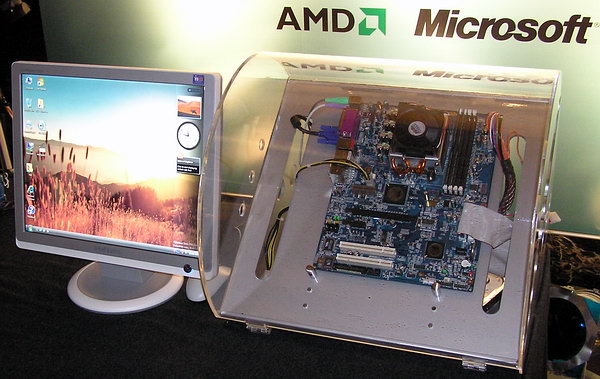 The company also pays much attention to the VIA S3 discrete graphics. For example, two girl-gamers, members of the famous GirlsGamingHouse, confirmed the value of using VIA and S3 Graphics hardware in gaming PCs in their eSports training facility in Stockholm. There is a transition from the traditional PC tower to mini PC form factors on the desktop side as well. During the keynote, Richard Brown, VP of Corporate Marketing, unveiled an exciting new concept: the VIA Vogue PC that truly personalizes the PC platform.  Comprising a full featured, compact PC plus a "wardrobe" of designer shell outfits, users can select the right outfit to suit their environment, whether sleek black leather for the office, chic chrome-framed for the home, or rugged blue for the den. 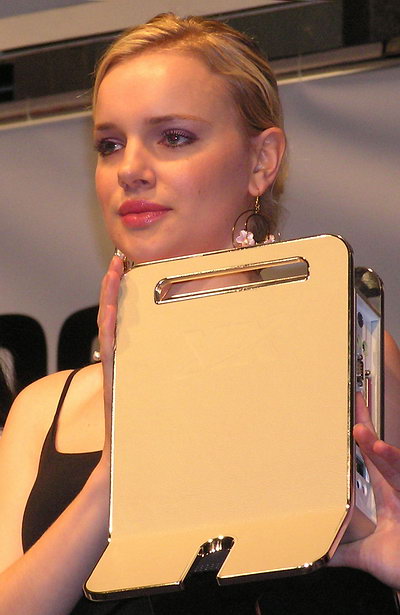 VIA Vogue PCs are also planned to be launched this year. VIA even arranged sort of a "fashion show" on the stage of the main hall - three fascinating girls (IT specialists from VIA) |
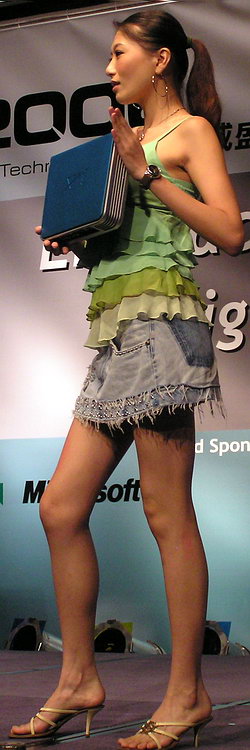
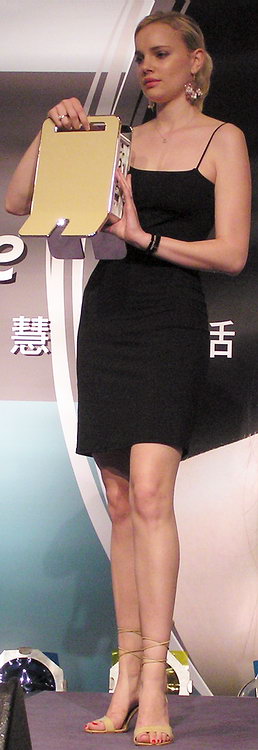  |
demonstrated VIA Vogue PCs. I couldn't help publishing their pictures. ;)  However, if we compare VIA Vogue PC with Mac mini, AOpen miniPC, FIC GE2 and some other mini boxes that are growing increasingly popular, the latter will be evidently larger, though they are similar in functions and performance. However, VIA can make a better offer at the cost of this compact PC.
VIA pc-1 InitiativeVIA pc-1 initiative also belongs to the desktop segment, it was described at the last VTF 2006. A brief reminder: the object of VIA pc-1 initiative "Enabling the Next 1 Billion" is to equip the next one billion people on Earth with cheap computers based on VIA processors (as you may already know, about one billion people already have access to electronic information via their computers). There was formed a community to help promote this good undertaking. It's planned to solve the problem by using cheap sterling solutions from VIA in particular. VIA pc-1 architecture comprises two approaches so far. The first one — with the VIA pc1000 processor and integrated chipset VUA CLE266 supporting digital media on an ultra compact motherboard. This miniature platform dissipates just 18 watts (CPU), which is 70% lower than in typical processors of the same class. The second approach is to use a faster processor VIA pc1500 with additional functions, such as StepAhead Technology Suite and VIA Padlock Security Engine (the latter supports AES encryption of the "military" security level). However, this processor dissipates even less power — just 15 watts. Both platforms work with C-series chipsets (DDR memory, UniChrome graphics core, MPEG-2 hardware acceleration, six-channel audio, etc). 
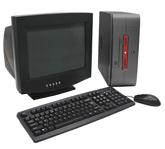 Reference designs of these platforms have a tad smaller system units than typical "narrow" microATX. They are designed to reduce the overall cost (and to make it available to more people in developing countries). 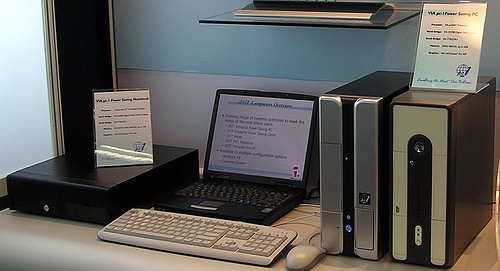 In particular, such a sterling multimedia system with a 15" CRT monitor and a bundle of sufficient easy-to-use software on a hard drive should be available for $225-$300. But it'll be able to run all popular software, which is now used on usual PCs. As one VIA representative put it in a private talk, this very form factor of a system unit (instead of a more compact design, which is already used in many VIA solutions, e.g. Mini-ITX and Nano-ITX), 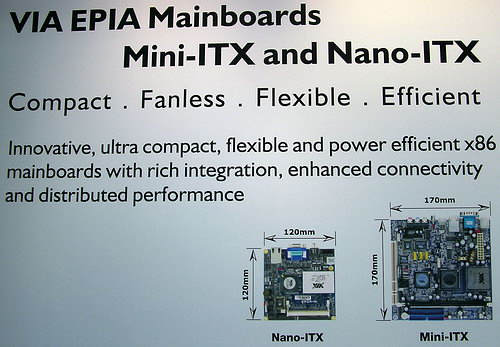 was chosen in order to reduce the overall cost of the solution, because smaller PCs are more expensive, as they require extra expenses on miniaturization.  There was also a demonstration of a VIA pc-1 PHD (Power Dust Heat, on the left) Appliance running off a 12V car battery, one of the important alternative energy sources in remote locations and in places with unstable (or unavailable) electricity supplies.  Besides, this computer is designed to be able to run on solar batteries and in rugged conditions — extra heat, dust, etc. (by the way, pc-1 PHD sample at VTF 2006 was equipped with a faster pc2500 processor, the other characteristics are available on the photo).  Try to run your PC (not a notebook) on a car battery somewhere out-of-the-way — you will fall in love with the idea of economic VIA pc-1. ;)
Write a comment below. No registration needed!
|
Platform · Video · Multimedia · Mobile · Other || About us & Privacy policy · Twitter · Facebook Copyright © Byrds Research & Publishing, Ltd., 1997–2011. All rights reserved. |